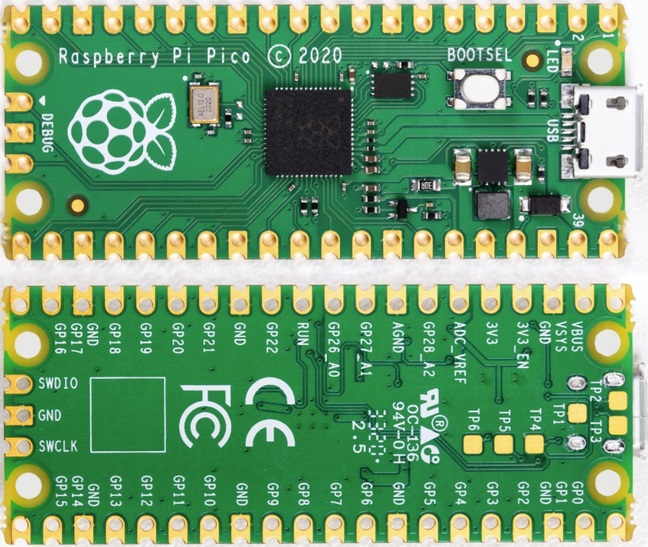Chill Out, Lockdown Ain't Over Yet – Perhaps FUZIX On The Pi Pico Could Feature In Your Weekend Shed Projects
Those pondering what to do with the latest Raspberry Pi gizmo, the $4 Pico, have a new option in the form of a FUZIX port.
Possibly to be filed under the category of "because we can", the port can be described as an impressive technical achievement, even if there isn't a tremendous amount one can do with the Unix-like OS at present
The GitHub repo notes of FuzixOS: "It is not yet useful although you can build and boot it and run test application code").
The port itself was undertaken last week by David Given, who had much praise for the tiny computer's documentation and SDK, although he remarked on "the almost non-negotiable requirement to use cmake as your build system."
"cmake," he added, "is pretty ghastly but to be honest build systems are always terrible, and cmake's not the worst choice."
Given went on to highlight that, once he'd decided to trust it, "it was a breeze to use and the Pico SDK's cmake addons make building binaries and flashable images trivial."
The result was a FUZIX port for the Pico (currently forked from the main repo) comprising a functioning set of core binaries including the Bourne shell, a vi clone, fsck and some games, SD card support, "a proper Unix filesystem" and, importantly, a serial console on the Pico's UART0.
What isn't present, he added, was multitasking and "an absence of bugs."
It is very impressive work. While getting full-blown Linux on the Pico (the hardware of which features 264KB of on-chip RAM and a dual core Arm Cortex-M0 running at 133MHz) has not been doable, the tiny FUZIX (motto: Because Small Is Beautiful) is an ideal fit. It does, after all, already run on something as constrained as Amstrad's old NC200.
Getting the port up and running was not as trivial as downloading a fresh image of Raspbian, but was undoubtedly a good deal more educational and, dare we say it, fun.
Unless it's just this hack that enjoys wiring things up on breadboards?
More work is needed on the port before it can be described as stable, although the fact that only one core is used and that there is plenty of spare RAM (relatively speaking) makes for some intriguing possibilities. ®
From Chip War To Cloud War: The Next Frontier In Global Tech Competition
The global chip war, characterized by intense competition among nations and corporations for supremacy in semiconductor ... Read more
The High Stakes Of Tech Regulation: Security Risks And Market Dynamics
The influence of tech giants in the global economy continues to grow, raising crucial questions about how to balance sec... Read more
The Tyranny Of Instagram Interiors: Why It's Time To Break Free From Algorithm-Driven Aesthetics
Instagram has become a dominant force in shaping interior design trends, offering a seemingly endless stream of inspirat... Read more
The Data Crunch In AI: Strategies For Sustainability
Exploring solutions to the imminent exhaustion of internet data for AI training.As the artificial intelligence (AI) indu... Read more
Google Abandons Four-Year Effort To Remove Cookies From Chrome Browser
After four years of dedicated effort, Google has decided to abandon its plan to remove third-party cookies from its Chro... Read more
LinkedIn Embraces AI And Gamification To Drive User Engagement And Revenue
In an effort to tackle slowing revenue growth and enhance user engagement, LinkedIn is turning to artificial intelligenc... Read more


